6 3D Printing Materials to Consider For Your Next 3D Model
3D printing has become a large and fast-growing industry. Meanwhile, there is a wide range of materials to choose from. How are you supposed to know which one to pick?
Depending on the purpose of your 3D print (for example showcasing a prototype, a building, or a functional product), different materials have different advantages. The choice of the right material can have a rather large impact on the final outcome. One of the most important things to consider as an engineer, a product designer or an architect, is which stage of the development lifecycle your project is currently in.
The development lifecyle is a process consisting of a number of phases that depend on each other's outcome and help to eventually achieve the best possible, well tested, and most throroughly reviewed product.
-
Prototyping - The prototyping of your product is part of all stages of the development lifecycle, as we'll explain later on in this article.
-
Create a concept model – Your first prototype or real draft of your product. It contains most parts of the design aspects but may not be presented in its eventual material or made with the same manufacturing process (for example, an architect will create a small-scale model of a building by hand - later on, in reality, the parts of this building will be produced in different materials and by machines)
-
Design verification – This phase reviews whether the design meets the predefined specifications and goals. Now shape, color, and surface have to be examined and tested. The functionalities (if there are any) of your product on the other hand are not being examined during this stage.
-
Fit, form, function
-
Form – Examines if the size, dimensions, weight and other visual parameters
-
Fit – Examines if interlocking items fit together
-
Function - Examines whether all predefined functions actually work.
-
-
Functional testing – This requires a functional prototype. It can be in a smaller size but it has to show how the model is going to behave in a real environment.
- Industrializing the production
Now we'll take you through a selection of different 3D printing materials. Their different structure and other properties can make them more or less eligible for your project, according to the stages of the development lifecycle, and their general purpose.
POLYAMIDE
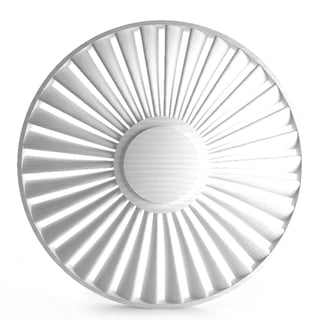
Description
Polyamide, also known as Nylon, is in powder form. The powder is white and very fine. When printed, the result is a strong, flexible and durable material that can take reasonable impacts and resist pressure during bending. As mentioned, normally it is a white material, but it can be easily colored during the pre- or post-printing phases. When printed, the material has a sandy surface. It can be combined with Aluminum powder to produce another frequently used 3D material – Alumide – which will be described later in this article.
Usage
Polyamide has a wide range of uses. In relation to the development life-cycle, it's a good choice for the concept-development phase as it is reasonably priced and it's possible to make highly detailed models with this material. It can be used to make small series of models, functional models, and even lamp-shades, for example. It is perfect for new designers who wish for a material that allows all kinds of shapes. Polyamide material is not well suited for wet weather outdoors, however, as it absorbs moisture - although in some cases it can be made water-tight. No problem in the sunshine. Polyamide is suitable for almost every phase of the development life-cycle.
ALUMIDE
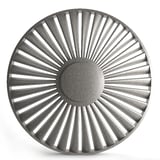
Description
As described earlier, Alumide is made of Aluminum powder and Polyamide. The combination makes the material strong and moderately rigid, which allows it to take small impacts and resist bending pressure. It has a sandy surface, similar to the Polyamides.
Usage
The material can be used for more detailed complex models, also (simpler) concept models and functional models (consisting of moving parts). It is also suitable in the production of series of models. Alumide is better suited than the Polyamide for uses that require more stiffness, or Aluminum-like design. This material is a very good choice when you need maximum freedom of creation without limitation because of the printing process. The material is tough, and you can include a lot of detail in your model with it. Even though Alumide can be used for almost all phases of the development life-cycle, maybe it makes more sense to pick a cheaper material for the earlier phases, if budget is an issue.
GYPSUM
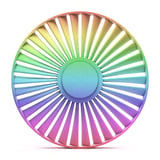
Description
Gypsum, also called Multicolor, is a fine powder. It allows you to print full-color models at very reasonable prices. The actual color of the material is whitish gray but you can choose from a palette of 16.7 million different colors for your model, when printing – as many colors as you want, on any one model.
Usage
Gypsum can be used for non-functional models with multiple colors. The creation process allows different designs and shapes. It is mostly used for figures, awards or architectural scale models which you would put on your desk or shelf. The model should be handled carefully. Even reinforced models are fragile and have problems absorbing shock. Gypsum is not suitable for long and tiny parts or details such hair or antennas.
PAINTABLE RESIN
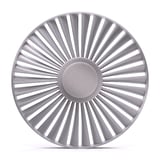
Description
When not painted, this material is transparent. Models made of this material have a smooth surface and medium mechanical resistance. Some additional finishing touches are required to get a model of high quality. Models made of paintable resin have design limitations due to the structures required for supporting the model, during printing.
Usage
Models made of paintable resin are perfect for presentation purposes because of their high surface quality – they are detailed and smooth. The painting of the models is done with a spray and you can choose different colors and gloss factors. The higher the gloss factor, the shinier the model. There are different basic transparent resins available - transparent colorless, transparent blue, etc. Then you can paint on top of that.
ABS
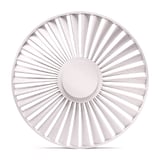
Description
ABS models are constructed out of thermoplastic. This material is very suitable for low-cost functional applications because it has similar characteristics to the materials used in the final production phase. Very similar characteristics to what you would get after producing the final product with injection molding. The created models are very accurate and you can have a lot of freedom in the complexity of your design – almost no restrictions, but the surface quality is not as good compared to the other materials.
Usage
This material can be used for fully functional models. Thus it can be used in all of the later phases of the development life-cycle, from design verification (including functional testing) to even the final-production-phase in certain scenarios.
TITANIUM
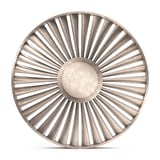
Description
Different metals can be used for 3D printing. One of the most common is Titanium. The raw-input material is a powder, which is sintered together with a laser. The models made from this are very strong and precise, and can be used as functional machine parts. The models have a matt-gray color and are slightly rough when not polished.
Usage
Titanium is an excellent choice for prototypes, fully functional parts, spare parts and jewelry.
CONCLUSION AND OVERVIEW
There are a lot of different possible materials for 3d printing. A perfect material for absolutely all situations doesn't exist, however. The best choice always depends on your requirements. The following table provides an overview of these materials described here, including additional characteristics, such as minimum wall-thickness, and others. The minimum wall-thickness, for example, depends on the finishing.

If you are still not sure which material is the right one for you and you believe you need help, get in touch and we'll do our very best!
